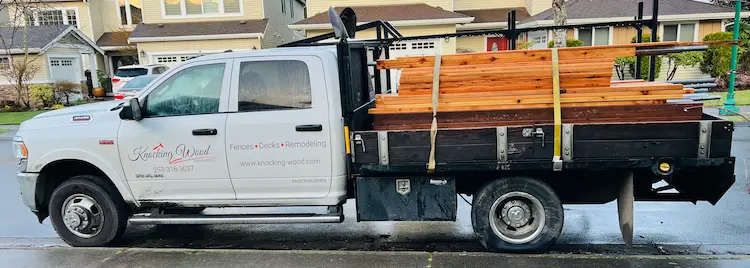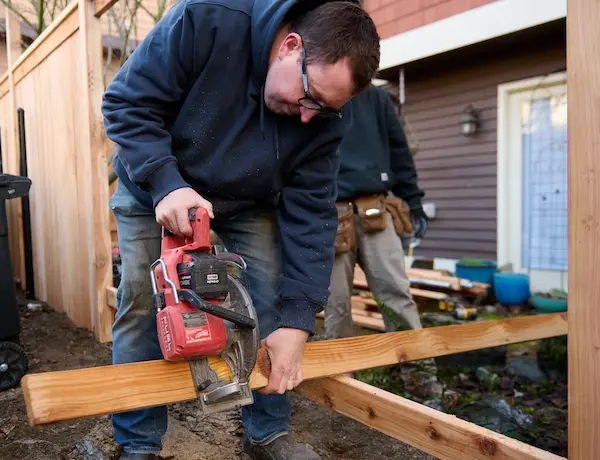When the Pacific Northwest rain is hammering your fence for months on end, your choice of posts becomes more than just a building detail—it becomes the difference between a structure that stands proud for decades and one that starts leaning before the next Seahawks season. Here at Knocking Wood Construction, we've been helping homeowners in Seattle, Bellevue, Kirkland, and Mercer Island build fences that last through our unique Northwest challenges since 2020. Let's talk straight about what really works in our soggy corner of Washington.
Why Galvanization Matters in Seattle
If you've lived here more than a year, you know our reputation for rain isn't exaggerated. All that moisture is the enemy of standard fence posts, which is why so many of our Eastside customers are switching to galvanized options.

I remember installing a fence for a family near Newcastle, WA. They'd replaced their fence three times in twenty years because conventional posts kept rotting out. The galvanized posts we installed are still standing strong, even with the constant rain in the area.
The zinc coating on galvanized posts isn't just a thin layer of protection—it actively sacrifices itself to save the steel underneath. Kind of like how we Seattleites will stand in the rain holding the door for a stranger while getting soaked ourselves. Loyalty matters, even in metallurgy.
Seattle-Specific Scenarios for Galvanized Posts
You're probably wondering if galvanized posts make sense for your specific property. Here's what we've found working throughout the greater Seattle area:
- Those sloped properties in Kirkland and the Mercer Island hills? Galvanized posts provide the structural integrity needed when soil pressure is constantly pushing against your fence.
- Waterfront properties along Lake Washington and Lake Sammamish? The combination of moisture and changing water tables makes galvanized your best friend.
- Got one of those gorgeous wooded lots in east Bellevue? The organic acids from decomposing leaves accelerate wood rot, but galvanized posts couldn't care less.
Dave from Juanita told me last week, "I thought saving money on standard posts was smart until I calculated the cost of replacing them every 8-10 years. Going galvanized from the start would have saved me thousands."
Post-on-Pipe: Our Seattle-Area Secret Weapon

If there's one innovation we've seen transform fence longevity in the Seattle area, it's the post-on-pipe approach. This hybrid system has become our most-requested option for a reason.
Take the Miller family in the Madison Park neighborhood of Seattle. Their property has that classic Northwest challenge: beautiful mature trees with aggressive root systems that push and pull at anything in the ground. Traditional fence posts didn't stand a chance, but our post-on-pipe system has remained perfectly aligned for over a decade now.
How does it work? We drive galvanized pipes deep into the ground—below the frost line and away from most root activity—then mount cedar posts above the soil line. Your neighbors see the beautiful cedar, while the invisible galvanized pipe below does the heavy lifting.
Location-Specific Considerations
Each part of our service area has its own quirks that influence post selection:
- Seattle: Older neighborhoods often have complex soil compositions from decades of development. We've uncovered everything from old foundations to mysterious underground streams. Pipe posts allow us to adapt quickly when surprises appear during installation.
- Mercer Island: The elevation changes mean water runoff is a major concern. Post-on-pipe systems prevent the soil erosion issues that plague traditional post installations on the island.
- Bellevue: From the lakefront luxury homes to the eastside developments, Bellevue properties often feature extensive landscaping investments. Our post systems can be installed with minimal disruption to existing gardens and irrigation.
- Kirkland: The combination of hill slopes and clay-heavy soil creates unique pressure on fence structures. Galvanized posts provide the extra strength needed for decades of stability.
Real Talk About Installation
I won't sugarcoat it—proper installation takes work. That's why we've spent years perfecting our approach for local conditions.
When we installed a boundary fence along a property line in West Seattle last fall, we had to contend with the notorious Seattle hardpan—that concrete-like layer that sits beneath our topsoil. Our specialized equipment for driving galvanized pipes meant we could penetrate this layer without the excessive noise and disruption of concrete work.
For post-on-pipe systems, the depth of pipe placement makes all the difference. As a rule of thumb, we recommend one-third of the pipe's length be underground. For example, a 9-foot pipe would have 3 feet buried for optimal stability, especially in our rain-softened soils.
Making the Right Choice for Your Property
Every Knocking Wood consultation starts with a walk around your unique property. We look at drainage patterns, soil conditions, sun exposure, and even the neighborhood aesthetic to recommend the perfect post system.
When that Kirkland homeowner called us worried about her fence that was starting to lean after just five years, I knew exactly what had happened before I even visited. The original installers had used standard posts in an area with seasonal water flow. The solution wasn't just replacing posts—it was upgrading to a system designed specifically for Northwest conditions.
Stop by our Bellevue showroom or give us a call to schedule a free consultation. Your fence isn't just a boundary—it's part of what makes your house feel like home. And in this corner of Washington, building it right the first time matters more than most places.
Because let's be honest—there are enough home maintenance tasks in the Seattle area without adding "replace failed fence posts" to your rainy weekend plans every few years.

